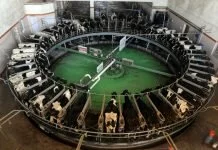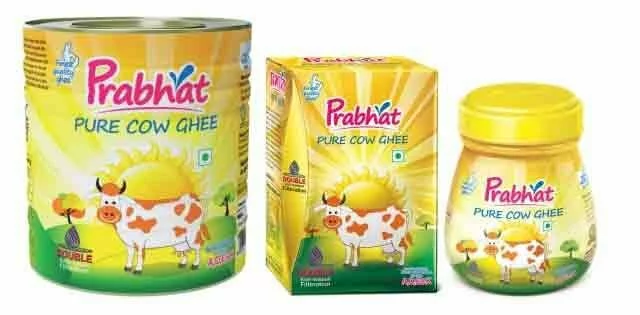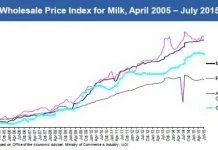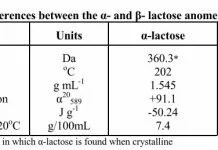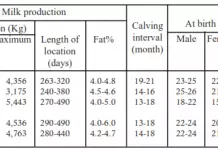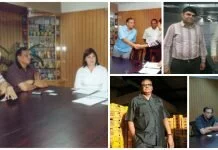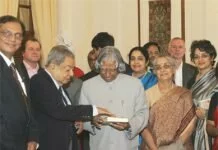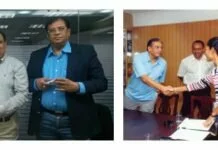Lessons in Incident & Disaster Management
On the 15th August 2001, I inaugurated the very first Amul Parlor in an AUDA run Garden in Ahmedabad and returned to Anand that afternoon. Next day, when I returned from my regular 50 minute morning walk, I picked up the news paper and just then the phone rang. The general manager of one of the key dairy plants; Mother Dairy Gandhinagar, Mr S K Bansal was on the other side of the line. He told me in a hurried voice that a worker had attempted self-immolation at the main gate of mother dairy.
First, a brief history though. In 1980’s milk procurement in the state of Gujarat was soaring high, year after year. As more farmers were joining the movement, more number of village dairy cooperatives were organizing & forming new district milk unions where previously none existed. More district coop unions were receiving milk much more then their own capacities and were too small to have their own powder drying plants individually. In 1986, despite best efforts, milk holidays were required to be declared in many areas, shaking faith of the farmers in these organizations and its leadership.
At the same time Ahmadabad Dairy known as Abad Dairy at that time owned by Gujarat Dairy Development Corporation (GDDC), was making losses and so also GDDC being government owned was under influence of state government and were not free enough to pass increased costs of milk to urban consumers.
The board of directors at GCMMF, could see opportunity or rather compulsion to enter Ahmedabad Milk market. Since the local district milk union’s own procurement was just about 1 lac liters per day (llpd) while the market was much bigger. GCMMF decided to invest in a state of art, the most modern automated dairy plant of the time, at Ahmadabad-Gandhinagar Twin city at the cost of Rs. 100 Crores. Thing to note is that this decision was made when GCMMF’s own turnover was just about Rs. 200 Crores!
This plant was commissioned in 1994 and named as Mother Dairy Gandhinagar. It subsequently in included a modern spray-drying tower and a anhydrous fat line so that all surplus milk from small and large unions, could be accepted in flush season and cost of such a plant would obviously get shared on entire milk marketed like an insurance cover!
Our own strategy was to launch milk in Ahmadabad way before the plant got commissioned. This market-seeding program allowed us to reach break-even point as soon as plant was commissioned.
When I visited dairy plant in 1994, I observed a peculiar difference. In all our other dairy unions, the dairy-workers were coming from villages and understood our core philosophy far better and hence possessed an emotional bond where as here in Ahmadabad most workers had an urban background and many had lost jobs in closed textile mills of Ahmadabad and joined here. Hence they were more ‘unionized’ than our district dairies.
I realized back then, that sooner or later there would be some kind of industrial unrest. I did not have any particular solutions in mind. I had seen my fair share of industrial unrest such as worker’s union getting formed in Amul dairy, demanding higher wages and compensation. I had seen them doing demonstrations to put pressure and 16 days of ‘illegal’ strike without notice in peak season forcing the milk producers to retailiate, take over dairies themselves, send their household members, about 800 or so to stay and work as labour under guidance of officers. Such radical moves did compel labour unions to see reason and come to settlement.
The strike at Amul was settled, throwing away outside union leaders and their interference. Since then both sides had realized mutual limitations and the need to respect each other. It took years to get that morale and tempo among the workers and staff & officers.
With this in mind, I decided to carry out a disaster management drill of 3-4 days, simulating a strike in Mother Dairy. Sometime in year 2000, I told the young leadership team to carry out this exercise and store their learning in a form of disaster management plan in the event of labour strike. The team arranged some 50 students from Dairy science college and deployed them to run essential product lines in the dairy with the help of key staff members, arranged for their stay and also for stay of ‘labour’ brought from outside in make shift tents. Over and above there were arrangements made food, medicine, temporary toilets, access to television and telecommunications etc. to simulate a lock down.
This dry run of disaster management plan proved really useful.
In 2001, when ‘Chatur’ the contract worker attempted self-immolation outside the dairy plan, the entire labour force went on an instant hysterical strike. There were nasty allegations, and we could not rule out any external influence. The first priority was to ensure medical aid to the person and second to prevent any escalation of violence at the plant. I instructed our top management to co-operate with police and let them investigate to bring out truth.
Thirdly, we quickly rolled out the disaster management plan and made alternative arrangement for supply of milk to and from other dairies so that the end consumers were not impacted. We also approached Gujarat High Court, which declared the strike illegal and through prolonged negotiation and perseverance convinced all section of workers to withdraw strike. Along with few board members of GCMMF, I met with the representatives, heard them and also explained our operating philosophy. I believe we found common ground; no milk to consumers meant no wages for the workers either. It was a lose-lose situation. They understood the same and gave us their support in making situation as normal as possible. Government of Gujarat also helped in sorting out the matter with political representatives involved in a transparent manner.
All the workers then signed a settlement where in they assured not to resort to such illegal strikes in future.
We could have taken disciplinary action easily and terminated a few troublemakers but I had seen how such an action made the remaining work force scarred, disconnected and afraid.
Instead, I thought ‘it is better they themselves realize their mistake, repent and develop higher level of commitment and belonging’.
I brought their parents, family, and children to see dairy plant and know for whom their kins are working.
I had full confidence in our team and I myself did not visit the plant even once during the strike, except to meet with the representatives. I had set the operating guidelines and rigor in our process and the team executed it to plan.
More importantly it is key to learn the truth as otherwise all our efforts to bring change would go waste. Curious to learn the real drivers for the strike, I had a private agency appointed to investigate real reason for self-immolation attempt. The agency monitored worker behavior, any political speeches or interference being made by any disgruntled leaders. They also observed the worker behavior in near-by villages, stayed there and did a thorough investigation. An investigation report was provided which we also shared with the relevant authorities.
Within 16 days the strike was withdrawn, situation became normal. Through out strike period, the dairy plant was run and milk was handled daily. After signing the agreement all workers joined duties, not one worker was terminated nor was any one was given a warning memo. There were incidents where in some workers who had earlier blamed the General Manager and had gone ahead to file wrong affidavits, came to us and literally cried, realizing that they supported the wrong elements.
Workers union was wound up once and for all.
Today we are in 2012. Twelve years have passed by and mother dairy workers and management have learned lessons of mutual dependence, limitations, to work with dedication and commitment. GCMMF has also compensated them in reasonable measure. Many facilities available to the workers and the truck drivers who drive the milk tankers which supply and collect milk – were all upgraded. Never before had a truck driver stayed in an Air Conditioned waiting & lodging area, and a 24 hour canteen for drivers & workers alike, which provided meals at very cheap rates and especially Milk!
In summary, workers in a dairy plant are also labor, like the milk producers in villages. Both must appreciate each others role and responsibility.
Lifting 40-liter milk cans for 8 hours or stacking butter in 4C cold storage is as difficult as milking and mending a herd of cows or buffalos. We hence need to be sensitive to both. My experience of handling two labor strikes and improving in the manner we tackled the second one, drawing learning’s from them – changed my mindset. It gave me much more confidence in dealing with both organized and unorganized labour with far more empathy.
Mr. BM Vyas took-over as Managing Director of AMUL Co-Op. during expansion and opening up of the Indian economy & globalization in the 90s. In order to take on the competition, he championed Total Quality Management across the dairy value chain in Gujarat. Within a span of 16 years at helm of AMUL, he increased sales of AMUL to eight-folds (from Rs. 9.8 billion to Rs. 80 billion). He steered AMUL to be Asia’s largest fresh Milk processor or No. 1 Dairy Brand in India as well as in Asia Pacific, as per Media Magazine Survey, 2009. Under his leadership; AMUL launched innovative and special Dietary products like Probiotic & Sugar Free Ice Cream, Probiotic buttermilk for the first time in India.

Comments
comments


